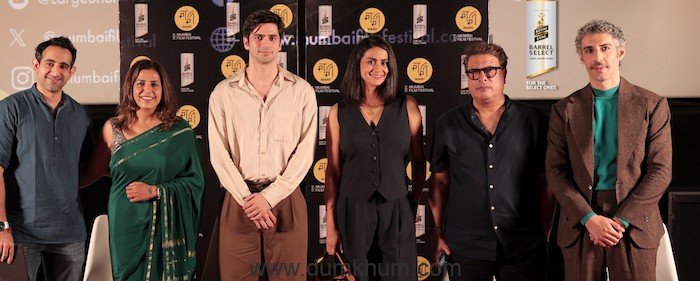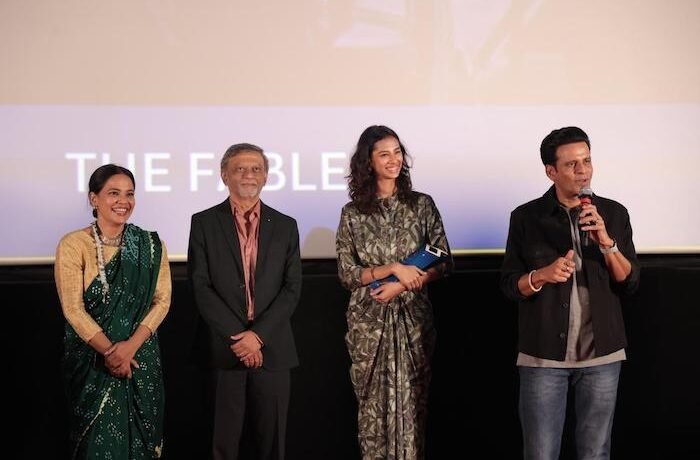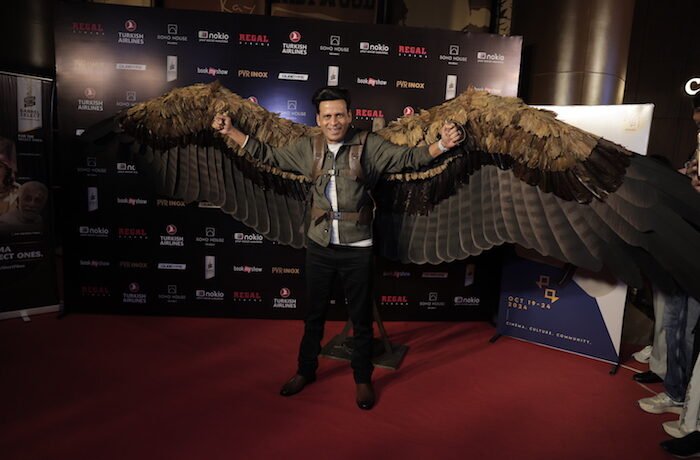Hundreds Years of Experimentation (1913-2013)
Retrospective of Indian cinema and video
28, 29, 30 June 2013
FD Zone, Films Division, Mumbai
Print Courtesy: DFF, FTII, SRFTI, NFAI
All screenings are free!
Curated by
Ashish Avikunthak & Pankaj Rishi Kumar
Curatorial Concept
This retrospective is a celebration of the spirit of experimentation in Indian cinema; from the moment of its mythic birth in 1913, with Phalke’s Raja Harishchandra, to the innovative and challenging moving images produced and exhibited today. The films brought together chart the transformation of experimentation, from early celluloid spectacle to contemporary digital adroitness. The curatorial impetus of this retrospective is marked by an emphasis on tracing the chronology of experimentation through the history of Indian cinema. It halts at pit stops of radical moments of experimentation and underscores it.
The idea of ‘experimentation’ rather than the experimental or avant-garde drives the films put together in this retrospective. The conceptual rubric of this ‘experimentation’ traces its theoretical genealogy from Gandhi’s “Experiments with Truth” rather than the Western art historical lineage of experimental or avant-garde. Although these terms are temporally analogous to the 1920s and have an aesthetic origin, experimentation in Gandhi has a metaphysical, self-reflexive and ontological root.
In this retrospective, experimentation
Retrospective Program
The retrospective begins by underscoring that the moment of birth of Indian cinema with Phalke was the first experiment – the “Experiments with Gods”. The kinesthetic employment of the divine sparks a birth of a representation medium in India that catapults modernity and tradition into a cinema of religiosity – a dominant form of cinema of the silent era. Here, the cinematic apparatus becomes a technological conduit, comparable to the oral, the visual and the written, for the manifestation of that religiosity.
It was more than 50 years later that the first experimentation occurred within the bureaucratic confines of the postcolonial Films Division in the late 1960s. These films challenged the formidable account of the sturdy developmentalist state and shattered its edifying edifice. These were the first cinematic critiques of the nation – forthright, trenchant and angry. S. Sukhdev, Pramod Pati, S.N.S Shastry and K.S. Chari among others, radically altered the possibilities of cinematic representation in India.
Soon the films funded by Film Finance Corporation (later NFDC) ushered the much-celebrated rise of the Indian New Wave. Mani Kaul’s Uski Roti (1969) and Kumar Shahani’s Maya Darpan (1972) spearheaded profound experimentation in this period. However, the foundation of this continued experimentation was first established in the venerable FTII under the tutelage of Ritwik Ghatak. The section “Experiment in School” is a small curatorial gesture towards the pioneering works produced in its confines along with the later established SRFTI.
Just like the narrative feature, documentary, short film and animation were also formidable sites ofexperimentation. There are sections devoted to each of these forms in this retrospective that will showcase some of the most cutting-edge works made in recent times as well as in the past. The films in these sections push the boundaries of form and structure in a direction not seen earlier; like the enlivening usage of found footage or the construction of disjunctural narrative structures. Films were not only made with state funding, but also by filmmakers who were outside institutional settings.
In the last decade, the meteoric rise of contemporary Indian art along with the technological democratization of video has allowed for a productive intersection. Now galleries and museums have become fecund locations ofexperimentation in moving images. The section “Experiment in the Gallery” focuses on both established as well as emerging artists experimenting with digital video and specifically showing in the gallery/museum context. The works selected here are particularly single-channel works that also have exhibitive possibilities outside of the installation context.
Finally, the emergence of the term ‘Cinema of Prayoga’ coined by Amrit Gangar to challenge the hegemonic category of the experimental and avant-garde. It has been one of the most significant moves in the history of Indian cinema. The term ‘Prayoga’ in “Cinema of Prayoga” is in conversation with the Western art history term ‘experimental’, by unequivocally critiquing it. Simultaneously, it argues for a new imagination for comprehending idiosyncratic cinematic practices in India. It signals the conceptual inadequacy of the term ‘experimental’ and at the same time opens up a richer discourse to understand what is happening in India. It roots its discursive imagination within the world of Indian philosophical theories that accentuate temporal probabilities.
Retrospective Structure
This retrospective is conceptualized as a conversation with cinema, cinematic experience and cinematic thought. The curators hope that the three-day festival will provide opportunities for thinking through the nature ofexperimentation in Indian cinema in a historical fashion – the transformation of form and structure through time. The conceptual tension of terms like experimentation, experimental, avant-garde and Prayoga hope to be debated upon and thought through.
It also responds to the careless and ahistorical usage of the term ‘experimental’ in media and popular culture. It delineates a clear genealogy of experimentation and creates a lineage. More than a curatorial assertion, this retrospective is a historical framing of experimentation in Indian cinema. It builds upon the pioneering work of curators like Shai Heredia and Amrit Gangar, who have in the past decade signaled a robust nature ofexperimentation in Indian cinematic modernity.
As a disclaimer, it should be noted that this not a comprehensive historical delineation of experimentation in Indian cinema. Some key and very important works by filmmakers like Mani Kaul, Kumar Shahani, G. Arvindan, John Abraham are missing because the curatorial emphasis has been on showing rarer, and unseen films rather than known masterpieces.
The various sections of this retrospective are not mutually exclusive. Some films and filmmakers can exist in more than one section if not multiple. The quantum of experimentation in Indian cinema is multifarious; therefore as a curatorial policy we have decided to show only one film by a contemporary filmmaker. Due to time constraints, we have focused on shorter works rather than epic and longer works which are equally important. Here it is imperative to mention films by Amar Kanwar, Arghya Basu, Kabir Mohanty, and feature length narratives by Amit Dutta, Vipin Vijay and Ashish Avikunthak.
We would also like to note that the curatorial ambitions of this retrospective have been thwarted due to the lack of original prints for exhibition of some films that we would have liked to show. Here we would specifically like to name Kamal Swaroop’s Om Dar Badar (1988), S. N. Dheer’s Pratishodh (1982), Vishnu Mathur’s Pahela Adhyay (1981) and Nirad Mahapatra’s Maya Miriga (1983).
The exhibitional emphasis of this retrospective has been to show almost all the works in their original format – 35mm, 16mm and digital video.
The office of the Director-General of Films Division who have artfully negotiated the bureaucratic maze of the Indian government to get us these prints have made this retrospective possible. We take this opportunity to thank them. We would also like to thank the National Film Archive, Pune, Directorate of Film Festival Delhi, Film & Television Institute of India, Pune and Satyajit Ray Film & Television Institute, Calcutta for loaning us the prints for this retrospective.
Screening Schedule
Day One — 28 June, 2013, Friday
28 June, 2013, Friday: 10.00-12.30 pm
Session 1: Experiments with Gods
A collection of early films made by D.B. Phalke between 1913 and 1935.
Raja Harishchandra (20 mins, 35mm, 1913)
Lanka Dahan (9 mins, 35mm, 1917)
Shree Krishna Janma (6 mins, 35mm, 1918)
Kaliya Mardan (50 mins, 35mm, 1919)
28 June, 2013, Friday: 1.15- 3.45 pm
Session 2: Experiment in the State
The earliest robust experimentation in India begins under the imaginative tutelage of Jean Bhownagary while he headed the Films Division in 1965.
Explorer – Pramod Pati (7 mins, 35mm, 1968)
Claxplosion – Pramod Pati (2 mins, 35mm, 1968)
Trip – Pramod Pati (4 mins, 35mm, 1970)
Koodal – Tyeb Mehta (16 mins, 35mm, 1970)
Abid – Pramod Pati (5 mins, 35mm, 1972)
Child on a Chess Board – Vijay B. Chandra (8 mins, 35mm, 1979)
India ’67 – S. Sukhdev (57 mins, 35mm, 1968)
28 June, 2013, Friday 4.00- 6.45 pm
Session 3: Experiment in the School
FTII became the centre of experimentation soon after it was headed by Ritwik Ghatak. Since then, along with SRFTI, it has continued to be a space where experimentation in cinema occurs on a regular basis.
Bodh Vriksha – Rajan Khosa (27mins, 35mm, 1987)
In Short – Kuntal Bhogilal (18 mins, 35mm, 1996)
Repentance – Rajeev Raj (22 mins, 35mm, 1997)
Chinese Whisper – Raka Dutta (27 mins, 35mm, 2006)
Airawat – Renu Savant (10mins, 35mm, 2011)
Moon Stars Lovers – Jessica Sadana (10 mins, 35mm, 2012)
28 June, 2013, Friday, 7.00- 9.00 pm
Session 4: Feature Film 1- Kanchan Seetha (87 mins, 35mm, Malayalam, 1977)
by G. Aravindan
Ending the first day with Malayali Filmmaker Aravindan’s masterpiece Kanchan Seetha – an invigorating reworking of the Ramayana, which opens up a new discourse on Indian cinema and its interpretation of religion. This film is located here to be in direct conversation with Phalke’s cinema of religiosity.
Day Two
29 June, 2013, Saturday
29 June, 2013, Saturday, 10.00- 12.30 pm
Session 1: Experiment with the Documentary
Documentary has been a formidable cinematic form in India. Although most innovation has occurred in world of the political, it has also has seen serious experimentation.
I am Twenty S.N.S. Sastry (20 mins, 35mm, 1967)
Tales from Planet Kolkata – Ruchir Joshi (38 mins, 16mm, 1993)
Brahma, Vishu, Shiva – R.V. Ramani (19 mins, video, 1999)
Presence – Ekta Mittal & Yashaswini B. R.- Behind the Tin Sheets Project (18 mins, HD, 2012 )
Nayi Kheti – Pallavi Paul (11 mins, HD, 2013)
29 June, 2013, Saturday, 1.15- 3.45 pm
Session 2: Experiments with the Short Film
This section focuses on films that were made outside the institutional framework of the state or the school and can be understood as independent experimentations, especially focusing on the short form.
Nirjan Godhuli – Santosh Gour (10 mins, 16mm, 1993)
Dust – Ashim Ahulwalia (20 mins, Video, 1993)
Atreyee – Shumona Goel (17 mins, Video, 2003)
Straight 8 – Ayisha Abraham (17 mins, Video, 2005)
Bare – Santana Issar (11 mins, Video, 2006)
Jan Villa – Natasha Mendonca (20 mins, HD, 2010)
29 June, 2013, Saturday, 4.00- 6.00 pm
Session 3: Experiments in the Gallery
In the last decade, the Art Gallery has become a vibrant space for exhibiting moving images mostly in the form of video art and installations. This section attempts to grasp with this new space of experimentation. It has been co-curated by Mortimer Chatterjee.
Record/Erase – Nalini Malani (10 mins, Video, 1996 )
Flight Rehearsals – Kiran Subbaiah (7: 26 mins, Video, 2007)
Dance Like Your Dad – Hetain Patel (6:15 mins, Video, 2009)
There is a spider living between us – Tejal Shah (7 mins, Video, 2009)
Man Eats Rock – Nikhil Chopra & Munir Kabani (22:11 mins, Video, 2011)
The First Dance – Hetain Patel (7:44 mins, Video, 2012)
Forerunner – Sahej Rahal (12:16 mins, Video, 2013)
File not Found – Jaret Vadera (1 min, Video, 2013)
29 June, 2013, Saturday, 6.30-8.30 pm
Session 4: Feature Film 2- Satah Se Uthata Aadmi (114 mins, 35mm, Hindi, 1980) by Mani Kaul
Mani Kaul is known mostly for his landmark film Uski Roti. However, the Satah Se Uthata Aadmi is probably his most conceptually rigorous and philosophically penetrating work. Based on the writings on Muktibodh, this film is a deep philosophical articulation on postcolonial modernity.
Day Three
30 June, 2013, Sunday
30 June, 2013, Sunday 10.00- 12.30 pm
Session 1: Experiments with Animation
Co-curated by Nina Sabnani, this section examines experimentation in the world of animation. We shall look at the way in which animation directors have pushed the boundaries and expanded its scope in process, materials, concepts and its functions.
30 June, 2013, Sunday 1.30- 4pm
Session 2: Cinema of Prayoga
The invocation of “prayoga” from Sanskrit etymology is Amrit Gangar’s radical move of rejecting the Western art historical terminology of experimental and avant-garde to explain the specific nature of experimentation in Indian cinema. This section has been co-curated by Amrit Gangar.
And now i feel i don’t know anything – Kabir Mohanty (35 mins, 35mm, 2001)
Egotic World – Vipin Vijay (21 mins, 35mm, 2002)
Kramasha – Amit Dutta (22 mins, 35mm, 2006)
Vakratunda Swaha – Ashish Avikunthak (22 mins, HD, 2010)
21 Chitrakoot – Sambhavi Kaul (9 min, HD, 2012)
30 June, 2013, Sunday 4.15- 6.30 pm
Session 3: Feature Film 2- Kaal Abhirati (120 mins, 35mm Bengali, 1989) by Amitabh Chakraborthy.
This is a significant film of this era that explores the complexities of human existence within the confines of Indian philosophy and discourse. This film, along with Kamal Swaroop’s Om Dar Badar, is the link between experimentations by Mani Kaul and Kumar Shahni and contemporary articulations by the ‘Cinema of Prayoga’ filmmakers.
30 June, 2013, Sunday, 6.45- 8 pm
Session 4: Round Table Discussion
The curators along with filmmakers, discussants and respondents will have a Round Table conversation teasing out and putting on the board the major points/ issues /debates that have been brought out in these three days.
Curator Biographies
Pankaj Rishi Kumar is a graduate from FTII who began his career as an assistant editor on Sekhar Kapoor’s Bandit Queen. He has been working as a documentary filmmaker for more than 20 years and his work has been shown at festivals all over the world. He has won grants from Hubert Bals, IFA, Jan Vrijman, AND (Korea), Banff, Majlis, Sarai and Pad.ma and was awarded an Asia Society fellowship at Harvard Asia Centre (2003). He also teaches and curates.
24, Pedder Road, Mumbai – 400026








